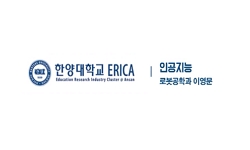<P>With the advent of ultrahigh-definition (UHD) video services, super-resolution (SR) techniques are often required to generate high-resolution (HR) images from low-resolution (LR) images, such as HD images. To generate such HR images and a vid...
http://chineseinput.net/에서 pinyin(병음)방식으로 중국어를 변환할 수 있습니다.
변환된 중국어를 복사하여 사용하시면 됩니다.
- 中文 을 입력하시려면 zhongwen을 입력하시고 space를누르시면됩니다.
- 北京 을 입력하시려면 beijing을 입력하시고 space를 누르시면 됩니다.


Super-Interpolation With Edge-Orientation-Based Mapping Kernels for Low Complex <tex> $2\times $</tex> Upscaling
한글로보기https://www.riss.kr/link?id=A107651822
- 저자
- 발행기관
- 학술지명
- 권호사항
-
발행연도
2016
-
작성언어
-
- 주제어
-
등재정보
SCOPUS,SCIE
-
자료형태
학술저널
-
수록면
469-483(15쪽)
- 제공처
-
0
상세조회 -
0
다운로드
부가정보
다국어 초록 (Multilingual Abstract)
<P>With the advent of ultrahigh-definition (UHD) video services, super-resolution (SR) techniques are often required to generate high-resolution (HR) images from low-resolution (LR) images, such as HD images. To generate such HR images and a video of UHD resolutions in limited computing devices with hardware and software, low complex but excellent SR methods are particularly required. In this paper, we present a novel and fast SR method, called super-interpolation (SI), by unifying an interpolation step and a quality-enhancement step. The proposed SI method utilizes edge-orientation (EO)-based pre-learned kernels, which inherits the simplicity of interpolation and the quality enhancement of SR. It performs SR directly from the initial resolution of an input image to the target resolution of an up-scaled output image without requiring any intermediate interpolated image. The proposed SI method involves offline training and online up-scaling phases. In the offline training phase, training LR image patches are clustered based on their edge orientations into different EO classes for which class-dependent linear mapping functions are learned between training LR and HR image patches. In up-scaling phase, an HR output image patch for each LR input image patch is generated by applying an appropriate linear mapping function selected based on the EO of LR input image patch. Our proposed SI method is intensively compared with the ten state-of-the-art SR methods for common image sets and many HD/UHD images. The experimental results show that the SI method yields the smallest running time and requires relatively small hardware resources. It outperforms the six state-of-the-art methods in average (peak signal-to-noise ratio) PSNR/(structural similarity) SSIM, and exhibits competitive or somewhat lower PSNR/SSIM performance compared with the others.</P>
동일학술지(권/호) 다른 논문
-
Salient Region Detection via High-Dimensional Color Transform and Local Spatial Support
- IEEE
- Jiwhan Kim
- 2016
- SCOPUS,SCIE




 ScienceON
ScienceON






